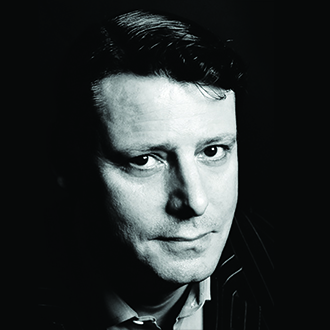One of the first things you need to know about The Skinny Center in Harrison is that it’s not all about being skinny. Founded six years ago by author and wellness entrepreneur Mitchell Suss, it’s about being healthy.
“This is not like Weight Watchers or those programs where you’re buying products or working on calories,” says Lisa Avellino, co-CEO (with Suss), fitness educator and patient liaison director. “It’s really about addressing nourishment, absorption and having your body live your healthy weight — helping your body prepare for weight loss.”
Nevertheless, for the majority of patients, doctor-guided, sustainable, healthy weight-loss — the center claims up to 30 pounds in 12 weeks is achievable — is the goal.
The “doctor-guided” element of the program is key as is to The Skinny Center’ proprietary Health/365, a comprehensive blood panel. Among other things, the panel measures hunger, adrenal and thyroid hormones, blood sugar metabolism and vitamin D levels, all of which reveal a vast amount of information about the individual patient.
“Health/365 provides a powerful tool to improve your mental and physical performance, reduce your future risk of disease and increase your longevity,” Suss says. “Our doctors can analyze the genetic markers and blood values that make up your body chemistry and isolate imbalances and their underlying causes to pinpoint the exact reasons why you cannot lose weight.”
Avellino puts it this way: “(The blood panel) is like having a customized book about yourself, and that’s the dream.”
The full program was created by a team of doctors and medical professionals and a doctor oversees the program and each patient’s “journey.” To get to their goals, patients work one-on-one with a nurse (who reads the blood panel) as well as a functional nutritionist and dietician on a weekly basis. The 12-week course comprises three phases — the pre-cleanse, the metabolic cleanse and the “clean body.”
As part of treating the whole body, the center also offers hydro or oxygen facials and massage and therapeutic alignment, as well as wardrobe and “style” advice for patients adjusting to a new, improved body image.
On a tour of the facility, I peep into bright and airy consulting rooms, some looking out toward woodland. The smart interior design — bold navy-and-white striped upholstered chairs, batik-style carpets — falls midway between a private clinic and a luxury hotel. It was certainly a clean, uncluttered, restful environment.
On a side table in one of the consulting rooms, I notice a display of what looks like irregular rocks, molded in plastic. “Do you want to see what five pounds of body fat looks like?” Avellino asks. “This!” she says, picking up the biggest, rubberiest, ugliest model — the size of a large chicken. She then picks up a couple of smaller models — one representing one pound of fat, the other of muscle. “The interesting thing when you’re learning about this,” she says, “is how body composition and body mass index (BMI) equate in our body.” Men, she says, need their waist measurement to be under 40 inches; women, below 35 inches. Visceral fat, she adds, is indicative of a fatty liver and inflammation of the gut, a remark that made me instinctively clutch at my midsection.
In the large room at the end of the corridor, events are held on a regular basis. Doctors, health professionals and other guest speakers address patients. “It’s all about education and inspiration and working on an individual basis,” Avellino says.
What the center is not about, she adds, is “1980s or old-millennium thinking about reducing the size of your thighs.” For years, apparently, people thought of weight loss in terms of “calories in, calories out” — in other words, eat less, move more. “And, unfortunately, many still do today.”
I confess that the “eat less, move more” mantra entirely sums up my approach to dieting, and one with which I have enjoyed reasonable success over the years. “Yes, but here’s the issue,” counters Avellino. “As overweight people age, they become yo-yo dieters. Look, this isn’t snake oil, this isn’t our opinion, it’s medical research. If we cut our calories to such an extreme in order to lose weight, then, as soon as our bodies adapt to it, we may not have the macro-nutrients to sustain our lean body mass, so we have to eat less and less to maintain that.”
This is why restricting our caloric intake or only following a particular food group inevitably leads to gaining the weight back — and then some. A vicious circle indeed. “We’re one of the fattest countries in the world,” Avellino says, “and so evolved with technology but not in understanding how our bodies work pertaining to fat loss.”
There is no typical Skinny Center patient. They run the gamut from young adults to seniors and come from all over — Westchester County, Greenwich, New York City, Long Island, even Boca Raton, Florida, and Los Angeles. And for patients who can’t or prefer not to travel, consultations via Zoom and TeleMed are an unforeseen benefit to have risen out of Covid.
But whether attending in-person or virtually, Skinny Center patients are looking for longevity and mental clarity, Avellino says. They might come in with “brain fog” or depression or are not sleeping well and not living optimally. The correlation between all of that and weight loss “is right here,” she says, adding:
“We don’t give drugs, we don’t give nutrients. It’s a customized approach with a medical team….It’s human physiology and science.”
For more, visit theskinnycenter.com.


